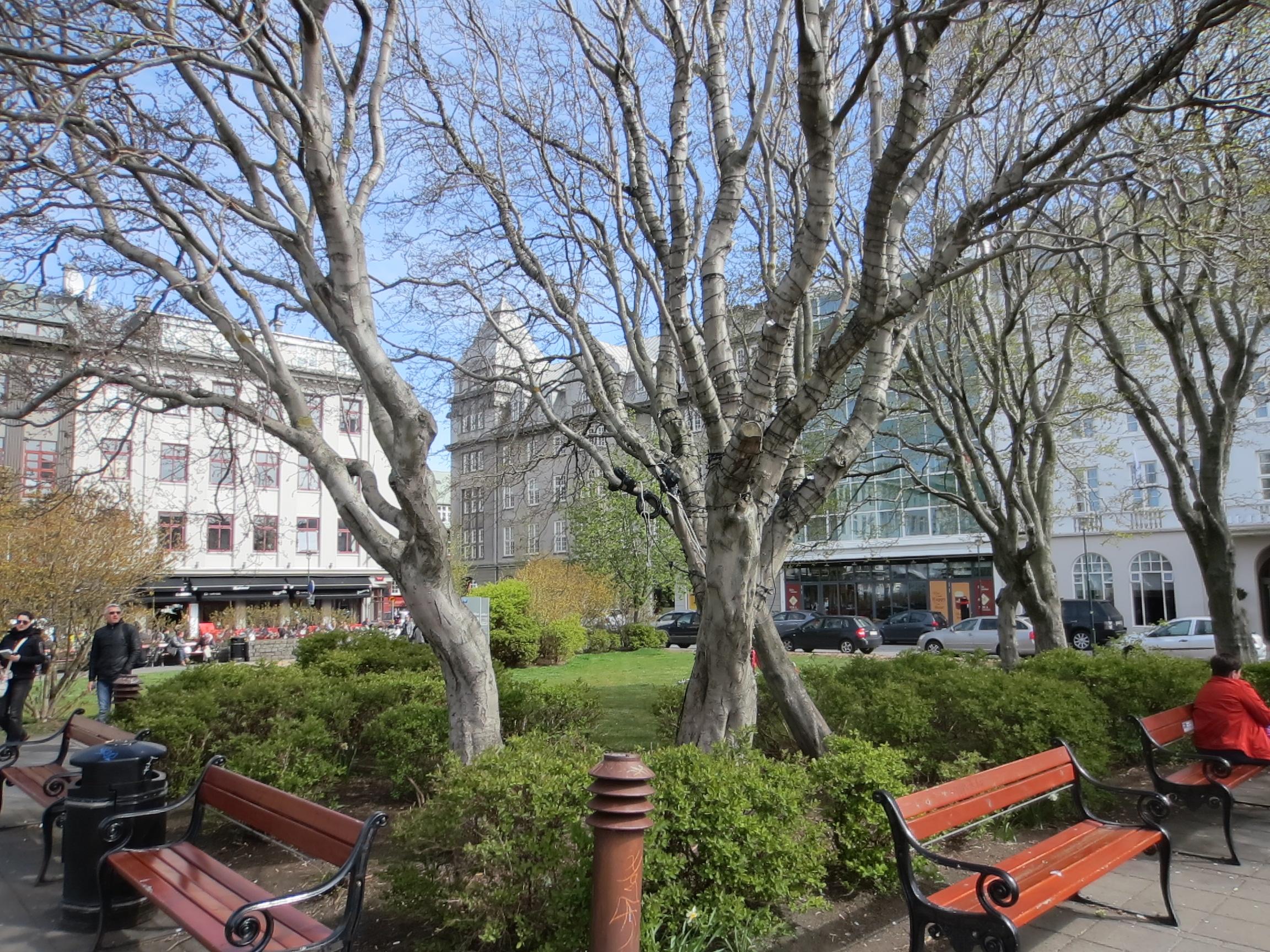Austurvöllur
Outdoor recreation areas
Austurvöllur
101 Reykjavík

About Austurvöllur
For many Reykjavík residents, Austurvöllur is the true center of the city and heart of the city center.
Austurvöllur was originally a field east of Víkurbær (Reykjavík farm) at Aðalstræti. It was the farmer's best field and much larger than today. The field extended from Aðalstræti east to Lækjargata and from the gravel ridge at Hafnarstræti to Tjörnin, with its southern part called Tjarnarvöllur. When the New Enterprises were built in 1752, Víkurbær was demolished.
Austurvöllur is now Reykjavík's oldest public park and has always been a popular gathering place.
On nice days, Austurvöllur fills with people enjoying the sun, dining at nearby restaurants, and admiring the historic buildings. Two of Iceland's most important buildings, Alþingi and Dómkirkjan (the Cathedral), stand at Austurvöllur's south end. Other notable buildings include Hótel Borg, Landsímahúsið, and Reykjavíkurapótek. A statue of Jón Sigurðsson stands in the center. Austurvöllur hosts outdoor events, including holiday celebrations, concerts, and protests. Each year, Christmas lights are lit on the Oslo tree in Austurvöllur.
Basic information
Age: Austurvöllur dates to the late 18th century, with its current boundaries set by Alþingishúsið's construction in 1881.
Transportation:
- Parking is available on Kirkjustræti, Kirkjutorg, Pósthússtræti, and Tjarnargata. Parking fees apply on weekdays 10am to 6pm and Saturdays 10am to 4pm.
- Public bus routes: 1, 3, 6, 11, 12, 13, and 14. Stops: Lækjartorg - Reykjavík Junior College - City Hall.
You can find: Restaurant - Café - Artwork - Benches - Gardening - Historical site - Festivities.
History
- Austurvöllur was originally part of Víkurbær's field.
- Early urban development in Reykjavík avoided Austurvöllur due to wet soil.
- In the 1830s, Governor L. A. Krieger banned construction to preserve open space in the urban area.
- Reykjavík's Dómkirkjan was consecrated at Austurvöllur's southeast corner in 1796.
- A pharmacy was built at Austurvöllur in 1833.
- The name Austurvöllur was officially established in 1848.
- Alþingi was built in 1881.
- From 1902 to 1937, Austurvöllur was fenced off and closed to the public.
- In 1931, the statue of Jón Sigurðsson replaced a statue of Bertel Thorvaldsen, which was moved to Hljómskálagarðurinn. The Jón Sigurðsson statue remained unmarked until his 200th birthday in 2011.
References
- Árni Óla. 1969. Old Reykjavík. Historical chapters. Reykjavík, 1969.
- Bragi Bergsson. 2012. Public parks in Iceland. Master's thesis. University of Iceland, School of Humanities.
- Georg Ólafsson. 1940. "Reykjavík Building Committee turns 100." Morgunblaðið's Reader, July 28, 1940.